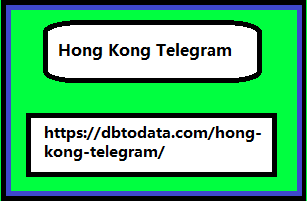Post by account_disabled on Mar 5, 2024 16:07:24 GMT 10
Do you want to know what proximity marketing is and how it can increase in-store sales ? Well, imagine passing in front of a point of sale , for example, that of the supermarket chain you usually frequent. At that moment , your mobile phone vibrates (or rings) and you receive a live notification from the store chain's proprietary app with a nice message inviting you to enter : “Hi, since you're near us, why don't you stop by to find out what's new and take the opportunity to have a coffee? We'll offer it to you! Come in and show this message at the cash registers of the bar, the café!”. You can only say no to an invitation like this if you are in a hurry: you never refuse a coffee! So imagine walking in and drinking the promised coffee.
While you are sipping it inside the shop , your cell Hong Kong Telegram Number Data phone vibrates again with a second message : "Welcome! Is the coffee to your liking? If you want, take a look at the new assortment of local Km zero products: there are some new cheeses and if you want to try them, there is a special 10% discount for you”. The brand's CRM , which aggregates and combines customer data, knows that you often purchase zero-mile products and that you prefer local cheeses. The promotion reaches you via mobile with a personalized, exclusive offer at the most favorable moment ... can you ever resist? And so far, we have hypothesized the case of a person who has no intention, at least initially, of stopping to do the shopping. Imagine the effect of the personalized offer, however, on a customer who is already intending to enter the store : one or more promotions created on the basis of his purchasing preferences , which reach him in real time, while he wanders through the shelves.

Jokes aside, this is proximity marketing which can not only encourage the drive to store , but also increase the average shopping receipt thanks to a series of targeted, personalized promotions sent at the right time for each customer. And not only that: personalization also works on the creation of an exclusive shopping experience that positively impacts brand awareness and loyalty. , Proximity marketing and proximity technologies Mobile proximity advertising is based on proximity technologies and proximity marketing. How does it work? Proximity technology is based on mobile devices and iBeacons , small format devices that allow you to send and receive content via Bluetooth Low Energy and patented inaudible audio signals . To be able to use them you need to have a proprietary mobile app capable of communicating with iBeacons , positioned inside the stores, and a CMS capable of managing push notifications , as well as incoming data on customer behavior within the store .
While you are sipping it inside the shop , your cell Hong Kong Telegram Number Data phone vibrates again with a second message : "Welcome! Is the coffee to your liking? If you want, take a look at the new assortment of local Km zero products: there are some new cheeses and if you want to try them, there is a special 10% discount for you”. The brand's CRM , which aggregates and combines customer data, knows that you often purchase zero-mile products and that you prefer local cheeses. The promotion reaches you via mobile with a personalized, exclusive offer at the most favorable moment ... can you ever resist? And so far, we have hypothesized the case of a person who has no intention, at least initially, of stopping to do the shopping. Imagine the effect of the personalized offer, however, on a customer who is already intending to enter the store : one or more promotions created on the basis of his purchasing preferences , which reach him in real time, while he wanders through the shelves.

Jokes aside, this is proximity marketing which can not only encourage the drive to store , but also increase the average shopping receipt thanks to a series of targeted, personalized promotions sent at the right time for each customer. And not only that: personalization also works on the creation of an exclusive shopping experience that positively impacts brand awareness and loyalty. , Proximity marketing and proximity technologies Mobile proximity advertising is based on proximity technologies and proximity marketing. How does it work? Proximity technology is based on mobile devices and iBeacons , small format devices that allow you to send and receive content via Bluetooth Low Energy and patented inaudible audio signals . To be able to use them you need to have a proprietary mobile app capable of communicating with iBeacons , positioned inside the stores, and a CMS capable of managing push notifications , as well as incoming data on customer behavior within the store .
